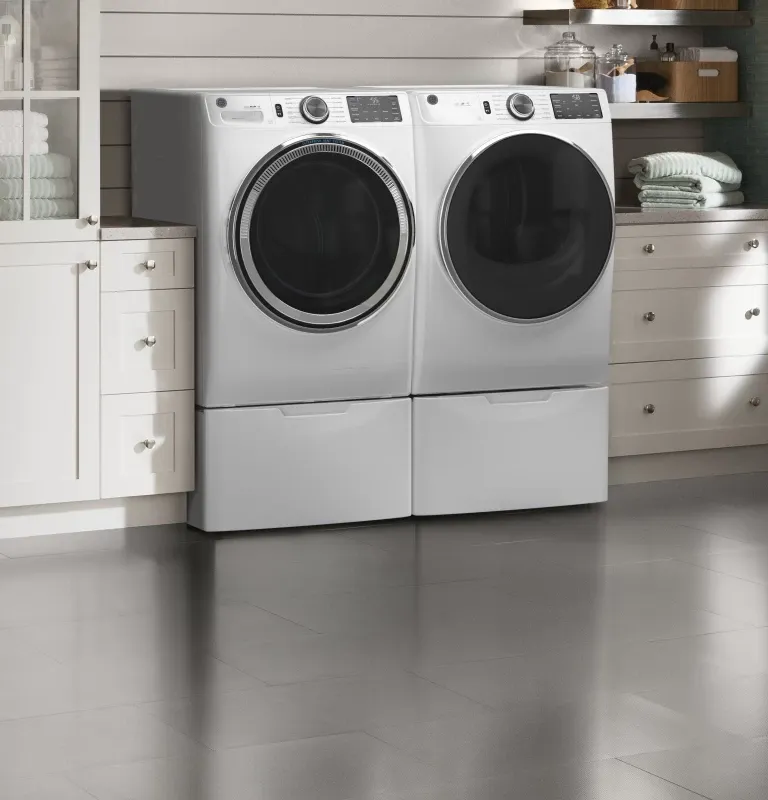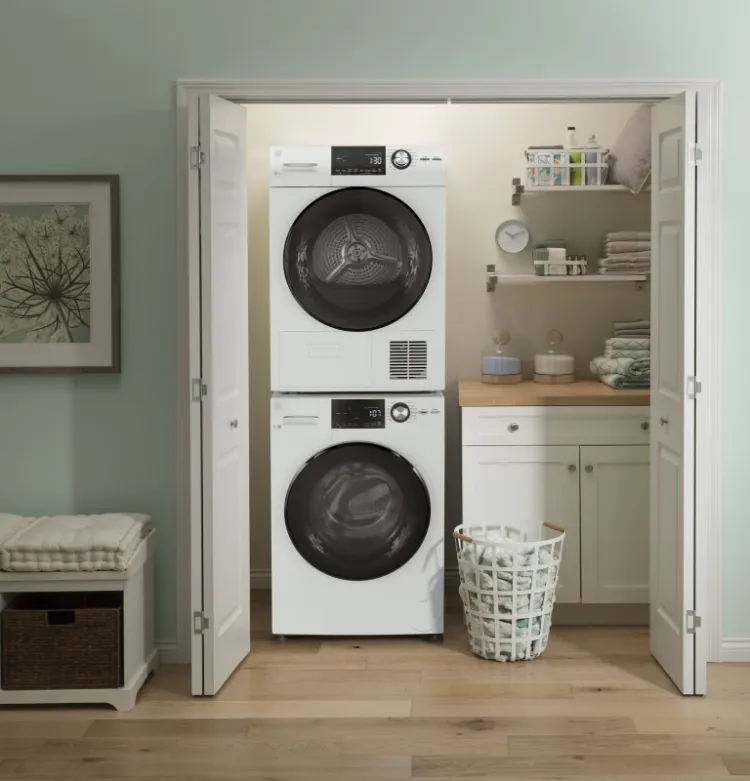How to Reset Your Washing Machine: A Guide To Help You With Your Washer

Washing machines are unsung heroes in our daily lives, quietly taking on the heavy lifting of all our laundry duties. Yet, when they hiccup with error codes or malfunctions, they quickly capture our attention. Knowing how to reset your washing machine can be a game-changer, sparing you unnecessary headaches and keeping your home running smoothly.
In this guide, we’ll walk through the essentials of washing machine reset, covering both front loader and top loader machines. We’ll explore common troubleshooting tips, dive into the maintenance routines that prevent future glitches, and provide step-by-step instructions to get your appliances back in action. Get ready to become your home’s appliance repair hero, mastering the art of the washing machine reset!
Understanding Your Washing Machine
Before diving into the reset process, it's crucial to understand the different types of washing machines and their basic functionality. This will not only help you when you start troubleshooting but also ensure you’re using your appliance to its full potential.
Types of Washing Machines
Front Loader
These washers have a door at the front and are known for efficiency in water and energy use. They offer thorough cleaning by tumbling clothes through a small amount of water.
Top Loader
With a lid on the top, these models are traditional and user-friendly, allowing you to add clothes mid-cycle. These washers use an agitator or impeller for moving the laundry during the wash cycle.
Combo Units
These are versatile, space-saving all-in one washers that combine washing and drying in one appliance, perfect for small living spaces.
How Washing Machines Work
Understanding the basic operation of your washing machine can help you get a better idea of the reset process. Generally, washing machines work by:
1. Adding your clothes to the washer and filling the drum with detergent and water to the specified level.
2. Agitating your clothes in the detergent-water mixture to remove any dirt and grime.
3. Draining the used water and spinning to extract excess moisture.
4. Rinsing the clothes with clean water and spinning again to remove the remaining detergent and moisture.
Common Features and Settings
- Washer Settings: These settings include various cycle options like normal, delicate, heavy-duty, and quick wash, catering to different fabric types and soil levels.
- Control Panel: This is the command center where you select cycles, start the machine, and, crucially, access the reset and diagnostic modes to restart your washer.
- Laundry Cycle Issues: Understanding different cycle settings can help pinpoint any issues, especially when the washer isn’t performing as expected.
By familiarizing yourself with these aspects of your washing machine, you're better equipped to effectively reset and troubleshoot it, and when you do, that always ensures a smoother laundry process at home.
Common Signs Your Washing Machine Needs a Reset
Sometimes, your washing machine communicates directly that something isn't right. There's a problem at hand and your washer is urging a reset. Recognizing these signs can prevent further damage and help maintain the efficiency of your appliance.
Error Codes On Your Washer and What They Mean
Washing machines are equipped with diagnostic systems that display error codes on the control panel when they detect a malfunction. These codes are essentially cryptic messages from your appliance, indicating specific issues. For example:
- E2 or F2 Errors: Often signifies a water supply issue in your washer.
- F5 or E5 Errors: Points to a problem with the drain system.
- LE or UE Errors: Indicates a load imbalance or motor problem.
It's always a good idea to refer to your washing machine’s user manual for a comprehensive list of error codes and their meanings. Here, you'll be able to find the exact codes and meanings for your specific make and model washer.
Unusual Noises or Behavior
Washing machines have a standard operational sound, but when you hear unusual noises like banging, grinding, or continuous beeping, it's a hint that something's off. Such sounds can indicate mechanical issues, blockages, or electronic malfunctions in your washer. It's a good idea to get these checked out as soon as possible so you don't create further damage down the line.
Incomplete Cycles or Failure to Start
If your washing machine consistently stops mid-cycle or won’t start at all, it’s a clear signal that a reset may be necessary. These issues can stem from power interruptions, control panel glitches, or deeper mechanical problems. Just as mentioned above, if you have reset your washer and the issues is still happening, it's always best to get these issues looked at as soon as possible.
Recognizing these signs early can save you from the inconvenience of unwashed laundry and potentially costly repairs. Resetting your washing machine can often resolve these issues, restoring normal function and extending the lifespan of your appliance.
Step-by-Step Guide: How to Reset Your Washing Machine
Resetting your washing machine can often resolve minor glitches and restore normal functionality. Here’s a general guide to resetting most washing machines, followed by specific instructions that are common for the most popular washer brands.
General Steps for Resetting a Washing Machine
1. Power Off:
Turn off your washing machine and unplug it from the electrical outlet. This allows the machine's electrical charge to dissipate.
2. Wait:
Leave the machine unplugged for about 1-2 minutes. This waiting period is crucial for the reset process.
3. Power On:
Plug the machine back in and turn it on. This simple step can reset the machine’s control panel and clear minor errors that might have popped up.
4. Run a Test Cycle:
Start a short laundry cycle without any clothes to make sure the appliance is functioning correctly.
General Instructions for Different Brands/Models
- Samsung: To reset a Samsung Washer, start by ensuring that the washer is completely powered down. Then wait five minutes.
Once everything is back up and running, look for a "reset" button on your washer's panel. The owner's manual for your washer should have any codes or inputs you need to include to conduct the restart.
Once you've found everything, run a test cycle to make sure your Samsung washer is back to normal.
- LG: To begin resetting an LG washer, start by making powering down the unit and unplugging it from the outlet. Wait 5 seconds and plug it back in. Then press start and try running your LG washer through a test cycle.
- Whirlpool: Similar to the other washer brands talked about above, to reset a Whirlpool washer start by powering off the machine and making sure that the cord is unplugged from the outlet. Then plug it back in to make sure any error codes on your Whirlpool are gone.
Tips for Troubleshooting Common Issues During the Reset Process
- Error Codes Persist: If error codes continue to appear on your washer post-reset, refer to your user manual for specific troubleshooting tips or contact a service technician to take a closer and professional look at things.
- Power Issues: Ensure the power source and outlet are functioning properly. Sometimes, the problem might be with the electrical setup rather than the machine itself.
- Control Panel Unresponsive: If the control panel doesn’t respond to the reset function, a power cycle or manufacturer’s reset procedure may be necessary to reboot the system completely.
Troubleshooting Tips After Resetting Your Washing Machine
Resetting your washing machine often fixes temporary glitches, but what should you do if the machine still isn't working properly? Here’s how to further troubleshoot and when to realize it’s time to call in the professionals.
What to Do If the Machine Is Still Not Working Properly
- Check the Power Supply: Confirm that your washing machine is properly plugged in and that the outlet is supplying power. Sometimes the power supply could be broken and a new line may be necessary.
- Inspect Water Supply and Drainage: Make sure the water supply valves are open and the drain hose is positioned correctly without kinks or blockages. You may have an obstruction that you didn't even realize was affecting the machine.
- Review the User Manual: Look for specific troubleshooting advice related to the issues you’re experiencing. Sometimes, the problem might be a simple setting adjustment.
When to Call a Professional for Help
- Persistent Error Codes: If error codes reappear after a reset and you can’t resolve them with the manual’s help, it’s time for professional diagnostics.
- Mechanical Failures: Strange noises, leaks, or problems that seem mechanical in nature are often beyond the scope of DIY fixes.
- Electrical Issues: If you suspect the problem is electrical, especially if there’s a smell of burning or signs of short-circuiting, professional intervention is necessary.
Maintenance Tips to Prevent Future Issues
- Regular Cleaning: Keep the detergent drawer, door seal, and drum clean to prevent mold and detergent build-up. A clean washing machine helps prevent build-up and grime can lead to washer malfunctions.
- Inspect the Hoses: Regularly check water inlet and drainage hoses for kinks, cracks, or blockages to prevent water supply and drainage issues.
- Use the Right Detergent: Use the type and amount of detergent recommended by the manufacturer to avoid excess suds that can lead to malfunctions.
Troubleshooting after a reset helps you understand whether the issue is minor and fixable or if it's time to seek professional assistance. Regular maintenance is key to preventing many common problems, ensuring your washing machine runs smoothly and extends its lifespan.
Now You’re Ready to Wash
Mastering how to reset your washing machine is an invaluable skill that can save you time, frustration, and potentially costly repairs. This guide has walked you through the essential steps to troubleshoot and reset both front loader and top loader washing machines, along with tips to handle persistent issues and maintenance advice to prevent future problems.
Remember, while resetting your washing machine can often resolve immediate issues, adhering to the manufacturer’s guidelines for regular maintenance is crucial. It not only ensures the longevity and efficiency of your appliance but also helps you maintain its warranty and reduces the likelihood of unexpected breakdowns.
So, take the time to familiarize yourself with your washing machine’s user guide, keep up with routine maintenance, and feel confident in your ability to reset and troubleshoot as needed. Your washing machine is a key player in your daily life, and with the right care and knowledge, it will continue to serve you well for many laundry cycles to come.



